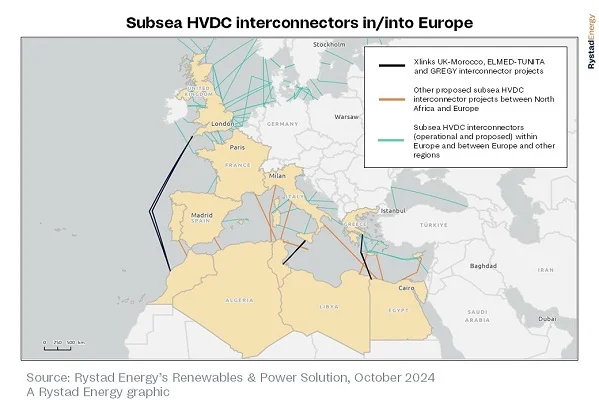
More than 5,500GW of new renewable energy capacity is expected to be added between 2024 and 2030. (Image source: Adobe Stock)
The International Energy Agency (IEA) has published its Renewables 2024 report which suggests that a massive growth of renewables to 2030 is set to match the entire power capacity of China, the EU, India, and the United States
More than 5,500GW of new renewable energy capacity is expected to be added between 2024 and 2030 – almost three times the increase between 2017 and 2023. China is set to account for almost 60% of this new capacity, making it home to nearly half of the world’s total renewable power capacity by 2030.
Solar leads the way
The IEA report indicates that solar pv alone will lead the renewables charge, accounting for 80% of the growth in global renewable capacity between now and 2030. Largely, this will arrive through the construction of new large solar plants as well as rooftop solar installations by companies and households.
The wind sector, however, stands ready to play its part. The IEA indicates that, despite ongoing challenges, wind is posed for a recovery, with the rate of expansion doubling between 2024 and 2030, compared with the period between 2017 and 2023.
Already, wind and solar pv are the cheapest options to add new electricity generation in almost every country.
Tripling renewables
While this represents a more impressive growth than some predicted, it is still not fully in line with the goal set at COP28 where nearly 200 governments sought to triple the world’s renewable capacity by 2030. The report, instead, forecasts that global capacity will reach 2.7 times its 2022 level by 2030.
However, despite this warning, the organisation indicates that the tripling renewable target is still possible if governments take near-term opportunities for action. This includes outlining bold plans in the next round of nationally determined contributions under the Paris Agreement due next year and bolstering international cooperation. Critically, the latter could help bring down high financing costs in emerging and developing economies that are restraining renewables’ growth in high-potential regions such as Africa.
“Renewables are moving faster than national governments can set targets for,” commented IEA executive director Fatih Birol. “This is mainly driven not just by efforts to lower emissions or boost energy security – it’s increasingly because renewables today offer the cheapest option to add new power plants in almost all countries around the world.
“This report shows that the growth of renewables, especially solar, will transform electricity systems across the globe this decade. Between now and 2030, the world is on course to add more than 5,500GW of renewable power capacity – roughly equal the current power capacity of China, the European Union, India and the United States combined. By 2030, we expect renewables to be meeting half of global electricity demand.”
Moving forward
While renewables are now on course to generate almost half of global electricity by 2030, the IEA emphasised that efforts need to be ramped up to securely integrate variable renewable sources into power systems.
The report also encouraged accelerating the adoption of sustainable biofuels, biogases, hydrogen and e-fuels. Since these fuels remain more expensive than their fossil counterparts, their share in global energy is set to remain below 6% in 2030.
Global solar manufacturing capacity is forecast to surpass 1,100GW by the end of 2024, a trend that is supporting a decline in module prices but also means that many manufacturers are facing financial losses.
According to the report, given the growing international focus on industrial competitiveness, solar pv manufacturing capacity is forecast to triple in both India and the United States by 2030, helping global diversification. However, producing solar panels in the United States costs three times as much as in China, and in India, it is twice as expensive. According to the report, policymakers should consider how to strike a balance between the additional costs and benefits of local manufacturing, weighing key priorities such as job creation and energy security.
African potential
Focusing on sub-Saharan Africa (SSA), the report notes that almost 90GW of new renewable capacity is forecast for the region between 2024 to 2030. This would increase SSA’s current installed capacity by more than 2.5 times and will largely be at the hands of South Africa which is expected to be responsible for 40% of the region’s new capacity.
The majority of new additions in SSA will be through solar pv and wind (accounting for 80%), although hydropower will play a key role in countries such as Ethiopia, Tanzania and Angola. In regards to solar, South Africa’s auction programme for utility-scale renewables will bolster installations, but additional markets are beginning to play a larger role. Nigeria, for example, can expect 7.5GW of new distributed solar pv as the country seeks to phase out fossil fuel subsidies. Most wind additions will also be driven by South Africa’s auction scheme. Outside of the country, the IEA suggests that policy uncertainty and the lack of a long-term plan for wind development means that developments based on several key projects are often backed by national utilities, aid agencies or development banks.
According to the combined national ambitions of sub-Saharan African countries, renewable capacity will more than triple to over 165GW by 2030. While main case additions fall short of this, the accelerated case exceeds it by considering the region’s untapped potential. At the national level, 15 countries are expected to meet or exceed their ambitions for 2030, while 22 will meet or exceed them only in the accelerated case.
It has only been a matter of days since the IEA released its Global Hydrogen Review 2024 assessing growing momentum in low-emissions hydrogen. Click here to learn more about the report.


























